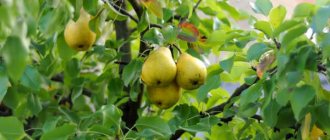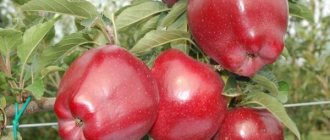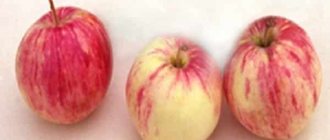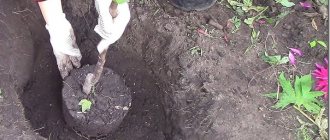Characteristics and description of the variety
After reading its description, many amateur gardeners will want to enjoy hot pepper and will be able to purchase seeds in order to grow this variety in their garden.
Productivity
One bush produces on average 60 fragrant fruits. Therefore, the yield from one bush will be 1.8 kg.
Height, plant weight, color, shape
The height of the spreading bush is 60 cm, and it is completely covered with elongated red pepper fruits. Their shape is cone-shaped, the skin does not wrinkle and the length of the fruit reaches 35 cm, respectively, the weight fluctuates between 30-35 grams. In this case, the pepper bends slightly along its length and resembles a ram's horn, which gives the variety its name. The aroma of the fruits is pronounced, and they have a piquant, pungent taste.
Maturation speed
Medium-late ripening variety. In order for pepper to fully ripen from the moment of seed germination, it takes 145 days. Therefore, it is grown only with the help of seedlings.
Planting time for seedlings
Planting dates for each region of Russia are different, since the southern regions plant seedlings in open ground in early May, and seedlings of this pepper can be planted in a greenhouse in mid-April. The northern regions, located at the latitude of the Moscow region, grow pepper only in greenhouses and if it is not heated, then pepper is planted in it on the 20th of May.
Therefore, based on this, the seeds are sown 2.5 months before the required date, that is, the Krasnodar Territory will plant seeds in early to mid-February.
IMPORTANT! Adhere to the timing of planting seeds for seedlings to get a good harvest.
Pepper variety Ram's Horn: reviews from vegetable growers on planting dates
When growing this variety, you need to take into account its mid-ripening. Ram's Horn is a pepper that takes 130-140 days from germination to fruiting. Taking this factor into account, you can independently calculate when you need to start germinating the seeds.
If you expect fruiting in July (this is realistic in a greenhouse), then you need to start germinating four months in advance, that is, at the end of February. To obtain strong seedlings, peppers need to be provided with plenty of daylight, up to eight hours in the first month, then up to twelve. This is achieved by special lighting.
In conditions where lighting is not provided, you can use a window facing southwest or south. Natural illumination in March will first be from four, then up to six hours.
The optimal time to start working with peppers is considered to be the beginning of March.
Reviews from those who planted
Antonina
This year, in my greenhouse, this variety grew to a height of almost 90 cm and was covered with long pepper fruits. The fruits were aromatic and had a spicy, spicy taste. Well suited for making various culinary dishes.
Arina
Well, a very productive variety. The bush was completely covered with pepper fruits, so that almost no foliage was visible. I plant it both in open ground and in a greenhouse I plant a couple of bushes. If the summer is warm, then it bears fruit equally in different places, but in cold summers the greenhouse certainly helps out.
Vladimir
I always grow many different varieties of hot peppers in my garden. Because I then sell it on the market. What can I say about Ram’s Horn? It always produces a consistently large harvest of wonderful hot peppers, which are in demand among the population. So this variety is a regular guest in my garden.
Description
Spicy, mid-late variety. The duration of the growing season is 130–145 days. The bush is compact, branched. Plant height is 50–60 cm.
The culture prefers to grow on aerated fertile soils and does not respond well to temperature changes and stagnant water. The Ram's Horn variety is intended for growing in beds and in film shelters. The yield of pepper in greenhouses is 3 kg per 1 sq. m.
Fruit characteristics:
- The shape of the peppers is cone-shaped, elongated. Peppers bear a strong resemblance to ram's horns.
- The length varies in the range of 25–35 cm, and the weight is 30–40 g.
- In technical ripeness the fruits are light green, in biological ripeness they are red.
- The taste is sharp with a soft aftertaste, the smell is rich.
- About 60 peppers are tied on one bush.
The fruits can be eaten fresh or used for canning. It is best to pickle or ferment vegetables when they are technically ripe, since at this time the skin is not as thick as after ripening.
Features of growing and caring for the variety
Growing this variety of pepper begins by sowing seeds. And in order for the seedlings to be healthy, you must adhere to these recommendations:
- Seeds are planted only in nitrogen-rich soil and it must be loose to allow oxygen to pass through to the growing root system.
- The container should have holes to drain excess water after watering.
- Before sowing, seeds are checked for germination and disinfected.
IMPORTANT! You can check for germination using a saline solution. Those seeds that float are not suitable for sowing seedlings and are removed and thrown away. They continue to work with the rest.
- The seeds are placed in moist soil and covered with transparent glass or a bag. This will help improve the conditions for seed germination.
- At this time, planted seeds need an air temperature within 25 degrees Celsius.
- When friendly shoots appear, the air temperature is lowered to 18 degrees Celsius and the cover is removed from the bowl.
- At this time, it is necessary to highlight the seedlings so that they do not stretch out. For this purpose, special lamps for plants are used.
- It is necessary to monitor the growing seedlings and carry out timely watering, turning them on different sides to the sun's rays.
IMPORTANT! Water the seedlings with warm water and by immersion.
Before moving the seedlings to a permanent place outside, they must be hardened off. Hardening is carried out for 10 days, gradually accustoming the seedlings to outdoor conditions.
Holes for planting seedlings of this variety of hot pepper are dug according to a 50x60 cm pattern.
Planting dates and care features
Hot pepper Ram's horn is planted using the seedling method. It is better to sow seeds for seedlings in the middle, end of February or beginning of March.
Preparing seeds and soil
Pepper needs soil with a high proportion of humus, but not heavy. Gardeners use a mixture of garden soil, humus and sand - all in equal proportions.
The soil mixture is disinfected with a solution of potassium permanganate or spilled with boiling water. The use of Fitosporin solution (according to the instructions) gives a good effect.
The seeds are pre-treated with potassium permanganate. Plant in rows in boxes or individual cups, deepening them to 1 cm.
The containers are covered with film or glass and placed in a dark, warm place until the first shoots appear. Ventilation is carried out 2-3 times a day, irrigated with water as the soil dries.
After germination, the film is removed and good lighting and warmth are provided.
Growing seedlings
Moderate watering, plenty of light, fertilizing are the basic principles of caring for seedlings.
Seedlings are watered depending on the condition of the soil. The main thing is to avoid overmoistening and the appearance of crusts. Settled tap water is suitable for irrigation.
Feed the seedlings 3 times:
- 2 weeks after germination.
- After the pick. If diving was not carried out, then after the appearance of 4 leaves.
- 5-6 days before planting in the ground.
Advantages and disadvantages of the variety
Like all different varieties, this pepper has positive and negative qualities.
Positive:
- excellent marketable fruits;
- spicy taste;
- high yield from one bush;
- good seed germination.
Negative:
- For a good harvest, it needs a lot of heat and timely watering.
Ram's Horn - bitter pepper: description of the variety, characteristics, cultivation
Lamb's horn is a pepper for those who like something spicy and fiery. But unlike the hottest ones (for example, Chili), it can be consumed fresh, placed on top of a sandwich. The sensation is incredible - a furious fire ignites in the mouth, but, fortunately, it goes out very quickly, leaving a soft, persistent aftertaste.
Red peppers, curved like a ram's horn, ripen on the bushes, hanging next to the green ones. The variety is unpretentious in cultivation, and if agricultural techniques are followed, it produces an excellent harvest.
The variety owes its origin to Italy (according to other sources - Hungary). Breeders began working with it at the beginning of the twentieth century.
The amount of capsaicin in peppers on the Scoville scale
Hot pepper Lamb's Horn is traditionally not one of the hottest peppers. The pungency in them is due to the presence of a special substance in them - capsaicin.
Back in 1912, the American chemist William Scoville, while conducting experiments in one of the pharmaceutical companies in Detroit (USA), developed a “pepper hotness scale” based on alcohol extracts.
She compares hot pepper varieties with natural chemicals based on their heat level.
units on this scale (some Russian producers offer not very hot seeds of hybrids of this variety, containing only up to 10,000 Scoville units). For comparison: pure capsaicide - 15 million.
units, gas cartridges - from 2 to 5.3 million units, the variety of Habanero pepper known in the Russian Federation - from 100 to 300 thousand units.
The substance capsaicin is used in pharmacology for warming patches, ointments, and tinctures. Pure capsaicin is a very hot substance; one milligram of it is enough to cause a severe burn, as if from a hot iron.
Growing in open ground
Plants should be planted when the soil temperature at night does not drop below 15-18 degrees; it should not be earlier - the plants will begin to be susceptible to all known and difficult to identify diseases.
The soil requirements are similar to those in greenhouses, but the covered surface under the bush requires a special approach: it needs to be mulched with hay, mown grass, and rotted leaves. Under a layer of mulch, the root system does not dry out, and weeds do not even sprout without light.
The formation of a bush is not required, the plant is standard. The height of pepper of this variety can reach up to 50 cm. The planting pattern is 50x50 cm.
Fruiting occurs at the end of July, beginning of August.
At the end of August-beginning of September (without waiting for low night temperatures), the plants can be removed from the soil with their roots. If there are unripe fruits left on them, the peppers are turned over and hung under canopies (the main part of them will ripen without shrinking).
Resistance to diseases and adverse conditions
The Ram's Horn variety resists various fungal diseases well. But this must be monitored, since especially in a greenhouse with its hot and humid climate, sometimes the plant can be affected by a fungal disease. To prevent this from happening you need to:
- after each watering, ventilate the greenhouse;
- plant plants according to the accepted planting scheme;
- treat bushes with folk remedies against fungal diseases.
When the environment becomes unfavorable for growing peppers, you must ensure that the air temperature in the greenhouse does not drop, otherwise the pepper may get sick and die.
IMPORTANT! The diseased bush is carefully removed from the garden bed and destroyed outside the site so as not to contaminate the ground.
Growing in a greenhouse
Varieties of bitter peppers, which include Ram Horn, require light soils without stagnant water, warm temperatures (the hotter and drier, the hotter the fruits will grow) and good watering at the root.
In a greenhouse, the height of the bush can be up to 70-80 cm. The planting pattern in the greenhouse is 60x60 cm. The bush grows powerful with a large number of fruits. Usually it does not require garter, but if all the conditions of the variety’s agricultural technology are met, and given the drooping location of many large fruits, some branches should be tied up.
The bush can have both fruits at the stage of technical maturity (green) and ripe ones - red. The fruits do not fall off, they must be carefully removed to allow the next ones to ripen.
In polycarbonate greenhouses, peppers can grow until October without heating. If you can create powerful lighting and heating (at least minimal), even in the conditions of the central zone of the Russian Federation, you can harvest fruits until November.
Preparing for winter
Some gardeners plant a couple of bushes in large containers and then, when cold weather sets in, they are brought indoors. Or you can carefully remove the bush from the open ground with a lump of earth in the fall and transplant it into a large bucket container and then bring it indoors. In this case, it continues to bear fruit until spring.
This pepper does not have many fans, but it is necessary in the household, since it is used to prepare various dishes that the whole family will enjoy eating.
Growing seedlings
To grow healthy and strong seedlings of Ram Horn pepper, you must follow a number of rules:
- Pepper seeds are planted in large containers and planted. The root system of the plant is quite sensitive to transplants, so it is better to sow the seeds immediately in separate containers.
- In order for seedlings to develop and grow well, they need 14-16 hours of daylight. Since the germination of pepper seedlings takes place in the winter-spring period, when daylight hours are still short, additional illumination with fluorescent lamps is mandatory.
- To germinate seeds, they provide a fairly high temperature (within 23-25°C), but when sprouts appear, this figure is reduced to 15-18°C. This slows down growth slightly, but helps strengthen the plants.
- Water the seedlings very carefully, using a small watering can. Watering is carried out when the top layer of soil dries. When the pepper grows a little, water begins to be poured into the trays, this stimulates the development of the root system.
- Once a week, the plant is fed with liquid complex fertilizer. More frequent feeding is unacceptable, since the pepper stretches and weakens.
When the seedlings become stronger, they can be planted in open soil, but before that the pepper must be hardened off. Hardening is carried out over 10 days, gradually allowing the pepper to get used to outdoor conditions.
Holes for planting peppers of the Ram Horn variety are dug according to a 50*60 cm pattern. In the southern regions of Russia, peppers are planted in open soil in early May; in greenhouses, planting can be carried out in mid-April. The northern regions, which include the Moscow region, practice only growing this pepper in greenhouse conditions, and if there is no heating in the greenhouses, then planting is scheduled for the 20th of May.
Timing of sowing seeds
Seeds are sown for seedlings 60-70 days before planting seedlings in open ground. But this is an average, depending on the region of Russia, the disembarkation time may vary. For example, in the Krasnodar Territory, seeds are sown from the beginning to mid-February. If you want to get a large amount of a good harvest, you must adhere to the specified planting time.
Storage and transportation
In order for bell pepper to be stored for a long time and not lose its beneficial and tasteful qualities, it should be properly prepared for storage. After harvesting, you need to rinse the pepper well and dry it. It should be noted that fresh pepper fruits are stored for a long time - fully ripe - about a month in the refrigerator or basement. If you pick unripe peppers, the shelf life increases to 4-5 months, and it can reach full ripeness.
For longer storage, many people use freezing peppers. It can be pre-cut, or frozen whole. The shelf life of frozen peppers is very long - several years.
It is also possible to dry the fruits of hot peppers. To do this, it is tied into bundles and hung until completely dry. Eastern cuisine loves spicy food, so dried pepper is ground and prepared as a seasoning, which is added to a variety of dishes.
Since ram's horn pepper has dense walls and can be stored for a long time, transporting this vegetable does not bring much trouble. It can be transported over long distances for further sale. The presentation is not lost.
Characteristics of the variety
The ripening period of this variety is long (130-150 days), so the Ram’s Horn hot pepper can safely be called a late vegetable. The description indicates that the plant is whimsical, requires constant replanting, feeding, it is necessary not only to create conditions for growth, but also to protect it from pests.
Due to its aroma and pungent taste, this variety is highly prized in various cuisines and cultures. The vegetable is most popular in Asia, which is famous for the spiciness of its dishes. In our countries they eat it as a snack, pickled or fresh.
Features of the bush
The characteristic states that an adult plant, with proper care, overcomes the 0.5 m mark in length. The bush has splayed, lush leaves and requires a lot of space. This should be taken into account when disembarking.
The bush has oblong leaves of a rich green color.
Description of the fruit
The fruits are bitter and stand out for their length, which can reach up to 50 cm in length. The diameter, on the contrary, is small, does not exceed 1.5 cm. Over time, it curls and takes the shape of a horn.
Features and Characteristics
Lamb's Horn pepper, as it is sometimes called, is popular due to a number of its features:
- The taste is spicy, with a slight sweet note, aromatic. Due to such properties as moderate pungency, it can be used by those people who have contraindications to peppers with high pungency.
- A distinctive feature is the ability to regulate the degree of pungency by reducing or increasing watering.
- Abundant and long-lasting fruiting.
Additional Information! Pepper is unique in that in the fall it can be transplanted into a pot and kept in the house - it will continue to bear fruit.
Pests and ways to combat them
Various insects, worms and larvae can ruin a significant portion of the crop. In order to understand how to fight the enemy, you need, first of all, to understand who they are and find out their weaknesses.
The main enemy of any plant in the nightshade family is aphids. This pest sucks juice from peppers, stems and leaves. After this, the plant dries out and withers. Products such as insecticides work very well against aphids. After spraying the bush, this pest dies.
Spider mites also suck sap from the plant, but the main distinguishing feature of this particular pest is the presence of cobwebs on the leaves and stem. The drugs Actellik, Karbofos, Fosbecid, Fufanon successfully fight spider mites.
One of the pests of the root system of pepper is wireworm. This worm belongs to the larva of the click beetle. The fight against this pest involves digging up the soil in the autumn, since the larvae of this pest remain in the ground for up to 5 years. In order to destroy all wireworms, a few weeks before planting peppers, bait in the form of a sweet piece of fruit is immersed in the ground. When the larvae collect on the bait, it is removed and the wireworm is destroyed. This procedure is repeated several times.
The appearance of slugs can cause great damage to most of the crop. To combat this type of pest, grooves are made around the bushes, approximately 2 cm deep, and a solution of nitrate is poured into these grooves. You can also sprinkle the soil around the plant with hot pepper or dry mustard. The substance Strela is actively used.











